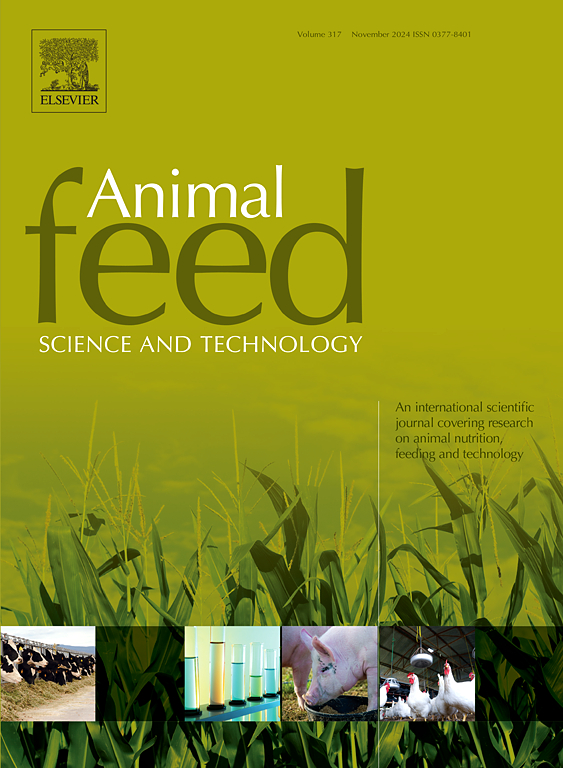The effects of dietary Cordyceps militaris substrate on growth, immunity, gonadal quality, and gut microbiota of the sea urchin Strongylocentrotus intermedius
IF 2.5
2区 农林科学
Q1 AGRICULTURE, DAIRY & ANIMAL SCIENCE
引用次数: 0
Abstract
Sea urchin Strongylocentrotus intermedius is a commercially valuable marine species in China. Cordyceps militaris culture (CMC), containing cordycepin, polysaccharides, cordycepic acid, amino acids, trace elements, and vitamins, was tested in varying concentrations (0.5 %, 1.0 %, and 1.5 %) in sea urchin feed to evaluate effects on growth, immunity, gonadal quality, and gut microbiota. Five groups were established: a kelp group, a control group (basic feed), and three feed groups with CMC supplementation for two months. The addition of CMC had no significant effect on survival rate. The weight gain rate in the 0.5 % CMC group was similar to the 1.0 % CMC group but lower than the kelp group. The 0.5 % CMC group had the highest gonad wet weight, comparable to the 1.0 % CMC group, and its gonad index was significantly higher than the kelp and control groups (P < 0.05). In gonad texture, the 0.5 % CMC group showed the highest hardness (not significantly different from 1.0 % CMC), significantly higher springiness, adhesiveness, and chewiness compared to the control group (P < 0.05). Cohesiveness was significantly higher than in the control group (P < 0.05), with no differences among other groups. Brightness in the 0.5 % CMC group was significantly higher than in the kelp group, while redness and yellowness were significantly lower (P < 0.05). CMC significantly enhanced SOD, CAT, and POD activities, with the 0.5 % CMC group showing higher SOD activity than the kelp, control, and 1.5 % CMC groups (P < 0.05). POD and CAT activities in the 0.5 % group were significantly higher than in the control group (P < 0.05). The 0.5 % CMC group exhibited the highest Firmicutes abundance and significantly improved gut microbiota diversity (P < 0.05). In conclusion, added 0.5–1.0 % CMC improved growth, immunity, gonadal quality, and gut microbiota. While 0.5 % CMC showed consistent improvements, some parameters reached peak values at 1.0 %.
饲粮中添加蛹虫草底物对海胆生长、免疫、性腺质量和肠道微生物群的影响
海胆是中国具有商业价值的海洋物种。以不同浓度(0.5 %、1.0 %和1.5 %)的蛹虫草培养物(CMC)在海胆饲料中进行测试,以评估其对生长、免疫、性腺质量和肠道微生物群的影响。CMC含有虫草素、多糖、虫草酸、氨基酸、微量元素和维生素。试验设5组:海带组、对照组(基础饲料)和3个饲料组,添加CMC 2个月。添加CMC对成活率无显著影响。0.5 % CMC组的增重率与1.0 % CMC组相似,但低于海带组。0.5 % CMC组的性腺湿重最高,与1.0 % CMC组相当,其性腺指数显著高于海带组和对照组(P <; 0.05)。在性腺质地方面,0.5 % CMC组硬度最高(与1.0 % CMC组无显著差异),弹性、黏附性和咀嚼性均显著高于对照组(P <; 0.05)。内聚性显著高于对照组(P <; 0.05),其他组间差异无统计学意义。0.5 % CMC组的光亮度显著高于海带组,红度和黄度显著低于海带组(P <; 0.05)。CMC显著提高了SOD、CAT和POD活性,0.5 % CMC组SOD活性高于海带、对照和1.5 % CMC组(P <; 0.05)。0.5 %组POD和CAT活性显著高于对照组(P <; 0.05)。0.5 % CMC组厚壁菌门丰度最高,肠道菌群多样性显著改善(P <; 0.05)。综上所述,添加0.5-1.0 % CMC可改善生长、免疫、性腺质量和肠道微生物群。虽然0.5 % CMC表现出一致的改善,但一些参数在1.0 %时达到峰值。
本文章由计算机程序翻译,如有差异,请以英文原文为准。
求助全文
约1分钟内获得全文
求助全文
来源期刊

Animal Feed Science and Technology
农林科学-奶制品与动物科学
CiteScore
6.00
自引率
6.20%
发文量
266
审稿时长
3 months
期刊介绍:
Animal Feed Science and Technology is a unique journal publishing scientific papers of international interest focusing on animal feeds and their feeding.
Papers describing research on feed for ruminants and non-ruminants, including poultry, horses, companion animals and aquatic animals, are welcome.
The journal covers the following areas:
Nutritive value of feeds (e.g., assessment, improvement)
Methods of conserving and processing feeds that affect their nutritional value
Agronomic and climatic factors influencing the nutritive value of feeds
Utilization of feeds and the improvement of such
Metabolic, production, reproduction and health responses, as well as potential environmental impacts, of diet inputs and feed technologies (e.g., feeds, feed additives, feed components, mycotoxins)
Mathematical models relating directly to animal-feed interactions
Analytical and experimental methods for feed evaluation
Environmental impacts of feed technologies in animal production.
 求助内容:
求助内容: 应助结果提醒方式:
应助结果提醒方式:


